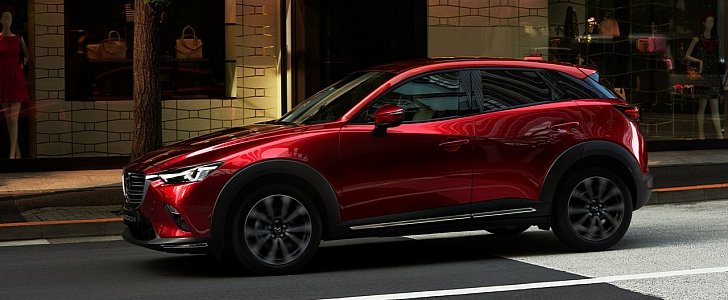The first generation Mazda CX-3 is a success, as nearly all subcompact crossovers have been. However, the Japanese automaker from Fuchu is already looking into major alterations for its successor.
When we tested the car, we only had one major complaint: it was shockingly small. On the outside, it looked to be the same size as a Mazda3 hatchback, but the rear seats and especially the trunk were so much tighter.
According to a scoop by GoAuto, the new CX-3 should debut around 2020, which seems a little optimistic considering updates were released this year. Unlike the Mazda6, this little crossover will receive comprehensive changes, starting with a new platform.
The SkyActiv II architecture will be stretched several inches, allowing the CX-3 to compete with the roomy rivals from Honda and Toyota. The design is something else they are looking to change, taking inspiration from the recent concepts as well as the CX-5.
Rather than the current multi-link rear setup, the 2020 CX-3 has been confirmed to use a torsion beam. This has been done because it's quieter, but we think Mazda is trying to keep cost down as well as deepen the trunk area. It also implies that AWD won't be available.
"The torsion beam axle is much better than multi-link suspension in terms of road noise, so we selected that in reducing road noise for customers. Because we got a lot of complaints from the media," Mazda director of research and development Kiyoshi Fujiwara told our source.
As you may have already heard, Mazda is looking to launch a new type of engine it branded "SkyActiv-X." It's a gasoline unit with compression ignition, like a diesel. This is supposed to result in 20 to 30% better fuel economy and more torque. The 2-liter that's going into the 2019 Mazda3 will have around 190 horsepower and 169 pound-feet (230 Newton-meters) of torque. So even one of Mazda's smaller 1.5-liter units could pack a punch.
No word about diesel, but European and Japanese models just got a 1.8-liter with more power, which should stick around for a few more years.
According to a scoop by GoAuto, the new CX-3 should debut around 2020, which seems a little optimistic considering updates were released this year. Unlike the Mazda6, this little crossover will receive comprehensive changes, starting with a new platform.
The SkyActiv II architecture will be stretched several inches, allowing the CX-3 to compete with the roomy rivals from Honda and Toyota. The design is something else they are looking to change, taking inspiration from the recent concepts as well as the CX-5.
Rather than the current multi-link rear setup, the 2020 CX-3 has been confirmed to use a torsion beam. This has been done because it's quieter, but we think Mazda is trying to keep cost down as well as deepen the trunk area. It also implies that AWD won't be available.
"The torsion beam axle is much better than multi-link suspension in terms of road noise, so we selected that in reducing road noise for customers. Because we got a lot of complaints from the media," Mazda director of research and development Kiyoshi Fujiwara told our source.
As you may have already heard, Mazda is looking to launch a new type of engine it branded "SkyActiv-X." It's a gasoline unit with compression ignition, like a diesel. This is supposed to result in 20 to 30% better fuel economy and more torque. The 2-liter that's going into the 2019 Mazda3 will have around 190 horsepower and 169 pound-feet (230 Newton-meters) of torque. So even one of Mazda's smaller 1.5-liter units could pack a punch.
No word about diesel, but European and Japanese models just got a 1.8-liter with more power, which should stick around for a few more years.

